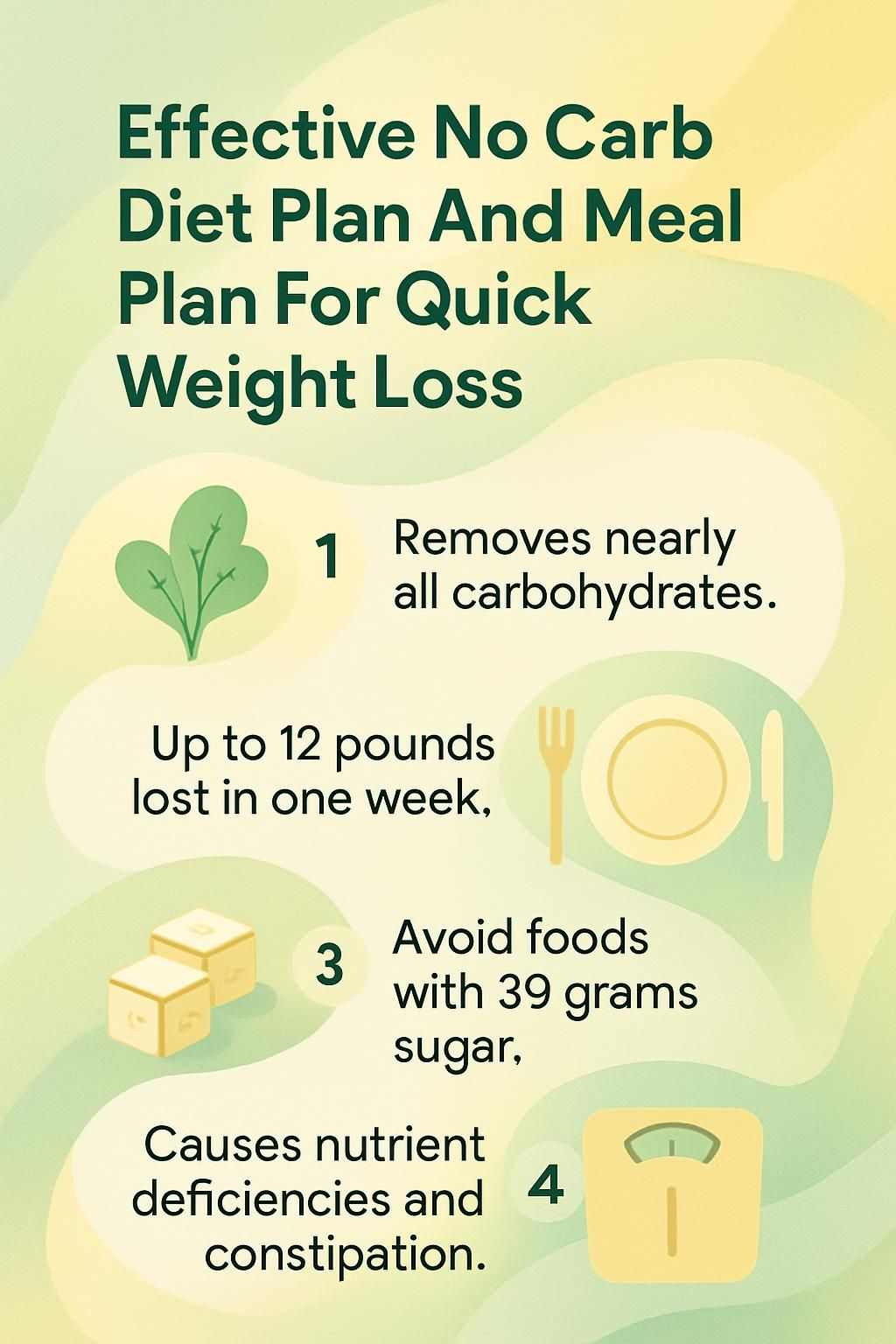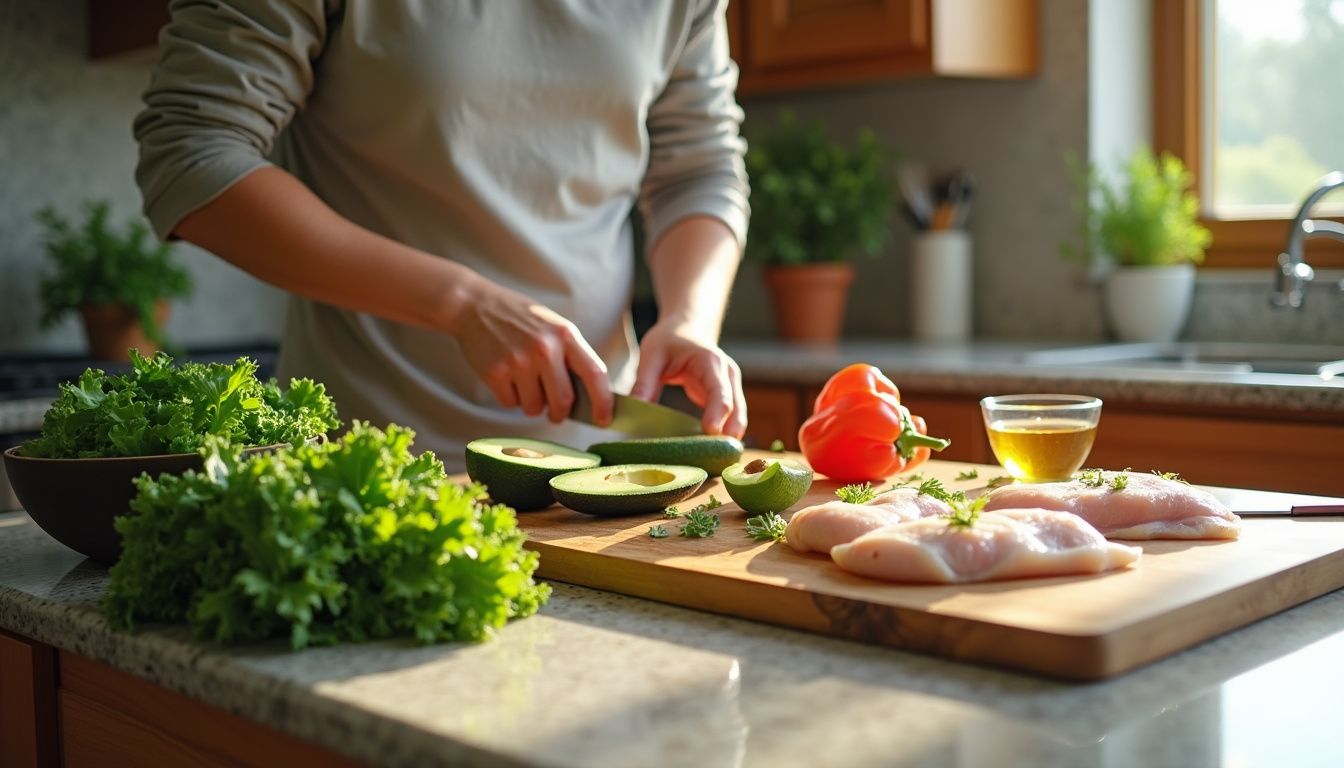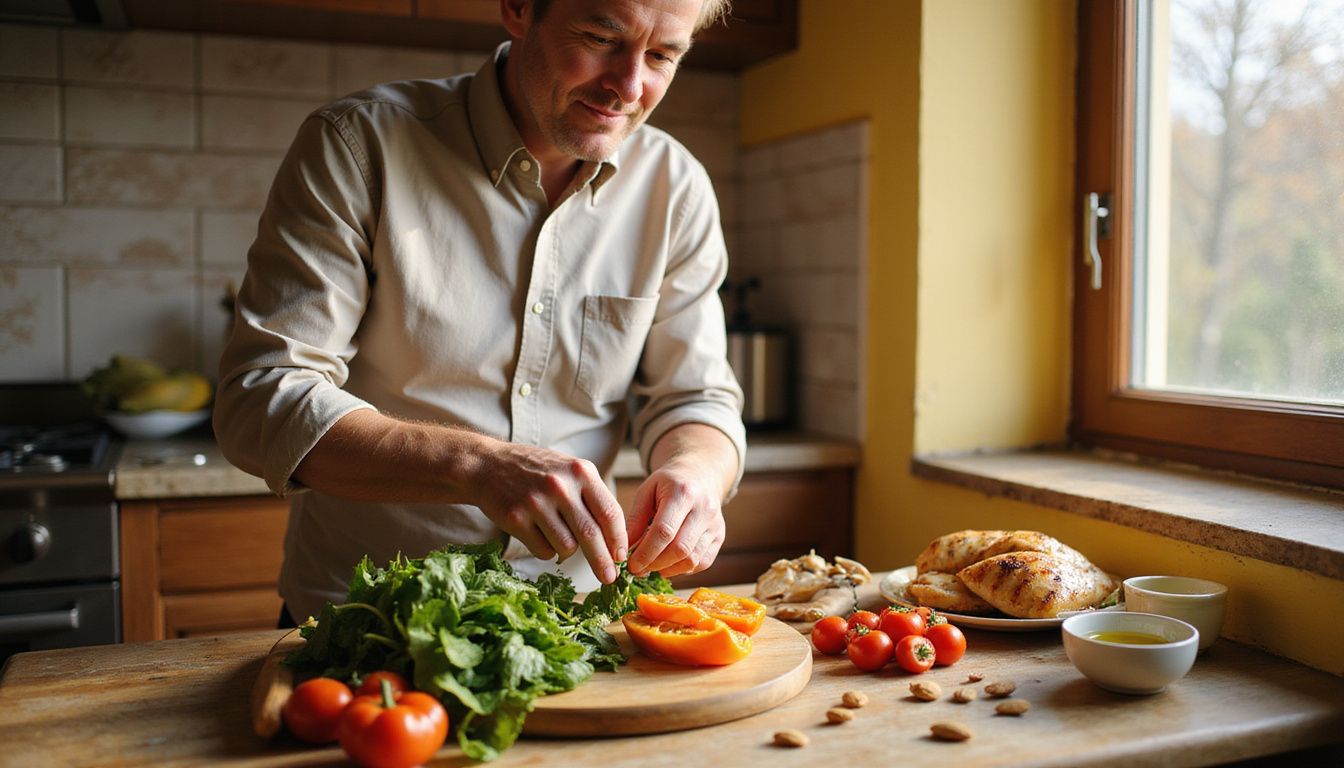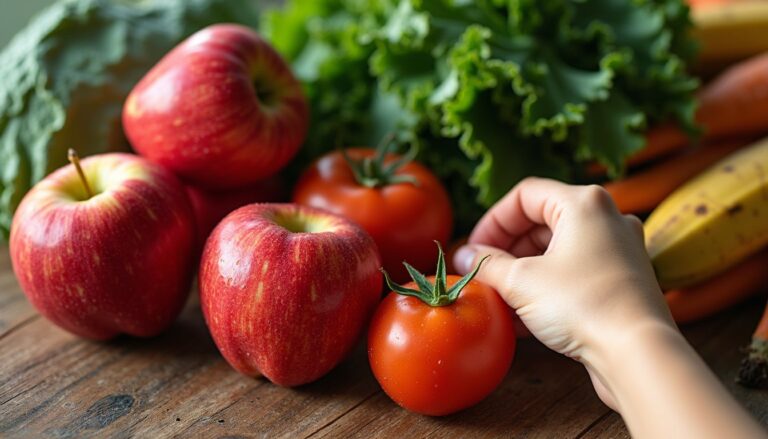Effective No Carb Diet Plan And Meal Plan For Quick Weight Loss
Our Nutrition Assistant AI Suite will transform your body. You will lose fat, get toned, and build muscle. Gain confidence and optimal health.
Many people want fast weight loss, steady energy, and fewer cravings, but the mixed advice feels overwhelming. A no-carb diet plan can help by removing most carbohydrate foods so the body uses stored fat for energy. I tested a simple meal plan and saw how fewer carbs can make choices easier and support better blood sugar control.
In this guide, you will find clear food lists, quick recipes, and sample menus. I also cover side effects and when to seek medical advice. Use what fits your life and start with small changes today.
Key Takeaways
- A no-carb diet removes nearly all carbohydrates and centers meals on meat, fish, eggs, healthy fats, and low-carb vegetables for faster weight loss.
- People with type 2 diabetes, like Paul, reported 12 pounds lost in week one and lower HbA1c after three months on a strict low-carb plan.
- Avoid grains, cereals, sugar-sweetened drinks, most fruits, starchy vegetables like potatoes or corn, and processed snacks.
- Common issues include low vitamin C and magnesium, constipation due to low fiber, and reduced workout power during the first weeks.
- Batch cooking proteins and vegetables improves consistency. Always speak with your healthcare team before major diet changes or medication adjustments.

What Is a No-Carb Diet?

A no-carb diet plan removes almost all carbohydrate foods and focuses on meat, seafood, eggs, and healthy fats. It is stricter than a typical low-carb diet plan, which allows more carbs per day and offers more flexibility.
What is a no-carb diet?
A no-carb diet restricts digestible carbohydrates from grains like rice and wheat, most fruits, beans and lentils, starchy vegetables such as potatoes and corn, and sweetened dairy. Allowed foods are near zero in carbs, including meat, fish, eggs, oils like olive oil or butter, and low-carb vegetables such as spinach or lettuce. Plain water, black coffee, and unsweetened tea are fine.
The goal is to shift from glucose, the sugar in the blood, to fat for fuel. This state is called ketosis, where the liver makes ketone bodies to power the brain and muscles. I saw quick weight drop in the first week, mostly from water loss as glycogen, the stored form of glucose, decreased. Experts caution about fatigue and nutrient gaps if you go longer than two weeks without planning variety.
A low-carb diet often allows 20 to 100 grams of carbs per day, while a strict no-carb pattern aims for as close to zero as practical. Knowing the difference helps you match the diet to your lifestyle and food preferences.
How is a no-carb diet different from a low-carb diet?
On a no-carb approach, I avoid grains, starchy vegetables, most fruits, legumes, and foods with added sugar. A standard low-carb diet does not eliminate carbs, it usually allows up to 130 grams per day, or under 26 percent of daily calories.
Some plans are stricter. Ketogenic diets often land near 20 to 50 grams per day. Programs like Atkins may start very low, then increase to under 100 grams. Low-carb diets usually include more vegetables, and sometimes a small serving of fruit or nuts. No-carb plans cut almost everything that contains measurable carbs.
Following a true no-carb plan leaves barely any room for error; each gram counts.
Benefits of a No-Carb Diet
A no-carb diet can support weight loss and improve blood sugar. Many people also report fewer cravings and more steady energy once they adapt to fewer carbs.
How does a no-carb diet help with quick weight loss?
Early weight loss often comes from dropping water tied to glycogen in the muscles and liver. For example, Paul, who has type 2 diabetes, lost 12 pounds in his first week on a strict low-carb meal plan. That quick change can boost motivation.
Higher protein and healthy fats increase fullness, so I felt satisfied with fewer calories from carbs. Lower insulin swings also encourage the body to burn fat. The first big dip on the scale is often water, then fat loss follows with consistent habits.
Can a no-carb diet improve blood sugar control?
Reducing carbs can lower HbA1c, a three-month average of blood sugar, and improve blood fats. Paul reduced his HbA1c from 51 to 42 mmol/mol in three months, then reached remission at 37 mmol/mol. Many people with type 2 diabetes see better glucose control on low-carb or ketogenic diets.
Medication needs can change quickly if you cut carbs. Work with your clinician to avoid hypoglycemia, which is low blood sugar. There is no clear evidence that no-carb diets are safe or helpful for type 1 diabetes, where matching insulin to carbs remains essential.
How does a no-carb diet boost energy levels?
As the body adapts to ketosis, some people feel fewer energy dips. I had less afternoon fatigue after several weeks on a no-carb meal plan. The first week felt rough, with slower workouts, then daily energy improved.
Response varies. Some people feel great, others need more time. If exercise performance matters to you, ease in, track how you feel, and adjust your training for a couple of weeks.
Does a no-carb diet reduce cravings?
Cutting sugar and refined carbs often eases cravings. Meals rich in protein, healthy fats, and non-starchy vegetables stabilize blood sugar, which helps control hunger. I found my sweet tooth faded after a few days of steady low-carb eating.
Early cravings can be intense. They usually drop as insulin levels settle. Focusing on whole foods, not ultra-processed snacks, reduces rebound hunger and helps you stick with your plan.
Foods You Can Eat on a No-Carb Diet
You have many satisfying options, including protein-rich foods, healthy fats, and certain low-carb vegetables. Build meals around simple ingredients you enjoy and can prep quickly.
Which meats and poultry are allowed on a no-carb diet?
Beef, lamb, pork, turkey, and chicken all fit a no-carb plan. Fresh cuts have zero carbs and make great protein anchors. Processed meats like some hams or sausages can contain added sugar or starch, so I check labels for hidden carbs.
I often bake or grill chicken breasts, ground beef, or steak with olive oil, herbs, and salt. The USDA nutrient database lists fresh meats as carb free, which keeps planning simple.
What types of fish and seafood fit a no-carb diet?
Salmon, trout, haddock, tuna, and similar fish are naturally carb free. Fatty fish like salmon also provide omega-3 fats that support heart health. Shellfish such as shrimp or crab work if they are not coated or sweetened.
I like baked or pan-seared fish with a side of spinach or zucchini cooked in olive oil. These pairings add flavor and micronutrients without adding many carbs.
Are eggs recommended on a no-carb diet?
Eggs are a top pick. One large egg has almost zero carbs, about 6 grams of protein, and 5 grams of fat. Eggs also supply vitamin D, choline, and selenium.
I use scrambled eggs, simple omelets with spinach, or hard-boiled eggs for snacks. They store well for several days and help me stay full between meals.
What healthy fats and oils can you consume?
Olive oil and avocado oil are great for cooking and dressings. Avocados offer healthy fats and some fiber. Coconut oil, butter, and full-fat dairy like heavy cream or cheese can add energy, but I track portions and choose unsweetened options. Some Greek yogurt contains carbs, so I pick plain and count it if I include it.
A small portion of nuts or seeds can work for texture and healthy fat. Fats help with fullness, which is important when you cut carb foods like bread or pasta.
Which low-carb vegetables are suitable?
Low-carb vegetables add volume, color, and nutrients. I rely on spinach, broccoli, cauliflower, asparagus, zucchini, tomatoes, bell peppers, lettuce, cucumbers, Brussels sprouts, and green beans. They are rich in vitamins and minerals and support digestive health.
Roasting, steaming, or sautéing with olive oil keeps flavors bright. These vegetables help prevent nutrient gaps that can happen on very strict plans.
Foods to Avoid on a No-Carb Diet
If your goal is near zero carbs, keep high-sugar and starchy foods off your plate. These items can raise blood sugar and stall progress.
Why avoid grains and cereals on a no-carb diet?
Grains and cereals are packed with carbs. White rice, pasta, tortillas, crackers, and breads add up fast. Even whole grains like brown rice, oats, and quinoa remain high in carbs per serving.
Removing grains helps keep insulin stable and supports fat burning. Many grain products also include added sugars that can trigger cravings.
Which sugary foods and drinks should be excluded?
Skip candy, cakes, cookies, pastries, and ice cream. Sugar-sweetened drinks such as soda, sweet tea, sports drinks, and many energy drinks are high in sugar. One 12 ounce soda has about 39 grams of sugar.
Some flavored yogurts and diet snacks hide added sugars under names like corn syrup or cane juice. Cutting these products helps control appetite and total calories.
What starchy vegetables must be avoided?
Potatoes, sweet potatoes, yams, peas, and corn are high in starch. A cup of mashed potatoes has about 36 grams of carbs, and a cup of sweet corn has about 30 grams. These amounts can disrupt ketosis and spike blood sugar.
Root vegetables like carrots and rutabaga are higher carb than leafy greens. To keep carbs very low, I favor non-starchy vegetables most of the time.
Why are most fruits not allowed?
Most fruits are rich in natural sugar, called fructose. Bananas, mangoes, and pineapples push carb counts up quickly. Even dried fruit and fruit juice are concentrated sources of sugar and should be avoided on a strict plan.
Some low-carb diets allow small servings of berries. A true no-carb approach does not. I noticed my sweet cravings dropped after I paused fruit for a while.
Which processed snacks are off-limits?
Skip cookies, chips, instant meals, and fast food sides. These products often contain refined starches, added sugars, and additives. They can raise blood sugar and hunger soon after eating.
Labels can be misleading. Many snack foods also include fats that do not support heart health. Choosing whole foods helps maintain progress.
Sample No-Carb Meal Plan for Quick Weight Loss
Here is a simple three day outline. It uses egg dishes, lean proteins, healthy fats, and non-starchy vegetables. Carb counts reflect vegetables and dairy, which means this plan is very low carb rather than absolute zero.
What does a no-carb breakfast, lunch, dinner, and snacks look like on Day 1?
Breakfast: Two scrambled eggs with fresh spinach and half an avocado, cooked in butter or coconut oil.
Lunch: Three ounces of grilled salmon with one cup of steamed broccoli.
Dinner: Beef stir-fry with three ounces of lean beef, one cup sliced bell peppers, and half a cup zucchini, cooked in olive oil.
Snack: Ten to fifteen almonds for crunch and minerals.
Focus on eggs, fish, beef, and non-starchy vegetables. No grains or fruit. Estimated total carbohydrates for the day, about 25.1 grams.
What are meal ideas for Day 2 on a no-carb diet?
Breakfast: Three egg omelet with one ounce cheese and half a cup diced bell pepper; about 7.5 grams carbs.
Lunch: One cup cottage cheese with half a cup sliced cucumbers and half a cup cherry tomatoes; about 9.1 grams carbs.
Dinner: Four ounces baked cod with one cup asparagus and three fourths cup cauliflower rice; about 7.7 grams carbs.
Snack: Small handful of macadamia nuts for healthy fats and very few carbs.
This menu stays under about 41 grams. Choose plain dairy and count it, since even unsweetened products contain natural milk sugar.
How to plan meals and snacks for Day 3?
Breakfast: Two hard-boiled eggs, one sliced tomato, and one cup avocado, about 19 grams carbs.
Lunch: Large shrimp garden salad with olive oil vinaigrette, about 10.5 grams carbs.
Dinner: Grilled chicken with Brussels sprouts and half a cup quinoa, roughly 25.2 grams carbs. Quinoa is higher in carbs, so swap for extra vegetables if you aim for stricter targets.
Snack: Celery sticks for crunch without many carbs.
Daily total is about 54.7 grams. Adjust portions to match your goals and energy needs.
Tips for Meal Preparation on a No-Carb Diet
Simple prep helps you stay consistent. I cook once, then combine parts in different ways during the week.
What are the best batch cooking and meal prep strategies?
Cook proteins in bulk, such as chicken thighs, ground beef, or hard-boiled eggs. Roast large trays of low-carb vegetables like broccoli and zucchini. Pre-portion snacks such as eggs, celery sticks, or a small handful of almonds.
Store meats and vegetables in airtight containers. Keep dressings separate so food stays crisp. Rotate proteins and vegetables to avoid taste fatigue and to cover more vitamins and minerals. Planning ahead reduces last minute choices that often lead to high-carb snacks.
How should you store and reheat no-carb meals?
I use airtight glass or BPA-free containers and label each one with the date. Most cooked items stay fresh in the refrigerator for 3 to 4 days. Single-serve portions make it easy to follow my diet plan and support weight loss.
I store vegetables and proteins in separate containers. This keeps chicken moist and vegetables crisp after reheating. Reheat food in the microwave, oven, or stovetop until it reaches a safe 165°F temperature 1. I add fresh herbs or avocado after reheating for better taste. These steps help me avoid common low-carb meal prep problems.
Healthy No-Carb Snack Ideas
Smart snacks help you stick with your plan between meals. Choose options that offer protein or healthy fats and very few carbs.
How to make cheese and deli meat roll-ups?
Lay a slice of unprocessed deli turkey or ham on a clean surface. Top it with a slice of Swiss or cheddar. Add leafy greens if you like. Spread mustard or sprinkle herbs, then roll it up tightly.
Each roll-up has about 0 to 1 gram of carbs, depending on ingredients. I make several at once and keep them in the refrigerator for quick, no-fuss snacks.
Are hard-boiled eggs good no-carb snacks?
Yes. A hard-boiled egg has about 0.6 grams of carbs and delivers quality protein and healthy fats. I cook a batch for the week and store them for up to seven days.
I season with salt, pepper, or paprika. Eggs are easy to carry and help control hunger without spiking blood sugar.
How to prepare avocado slices with olive oil as a snack?
Slice a ripe avocado and arrange on a small plate. Drizzle with olive oil and add salt and pepper. Half an avocado has about 2 grams of net carbs, which can fit many low-carb plans if you watch portions.
Eat right away for best flavor. On busy days, I pack pre-cut avocado with a squeeze of lemon to slow browning.
Eating Out on a No-Carb Diet
I scan menus for protein-centered plates and swap starchy sides for vegetables or a salad. A quick plan before you order makes meals out far easier.
How can you navigate restaurant menus on a no-carb diet?
I look for grilled chicken, steak, salmon, or shrimp. I replace bread, fries, rice, and pasta with a side salad or steamed vegetables. I ask for sauces and dressings on the side because many contain sugar or starch.
Checking the menu online helps me pick faster. If ingredients seem unclear, I ask the server. For drinks, I choose water or plain tea. If portions are large, I save half for later to manage calories and carbs.
What no-carb meal options are available at popular cuisines?
At steakhouses, grilled steak or chicken pairs well with sautéed greens. At Japanese spots, order sashimi without rice or sweet sauces. At fast food restaurants, ask for bunless burgers with cheese and extra vegetables.
Mediterranean places often offer grilled fish with vegetables like spinach or broccoli, which are fiber-rich and nutrient-dense. At Indian restaurants, tandoori chicken or kebabs without rice, naan, or lentils work well. For Greek salads, skip croutons and pita. At breakfast spots, omelets are a simple low-carb choice. I also watch for hidden sugars in sauces.
Potential Drawbacks of a No-Carb Diet
Very low-carb eating can bring side effects. I plan for them in advance and adjust if they persist.
What nutrient deficiencies might occur?
Cutting many plant foods lowers intake of vitamin C, magnesium, potassium, and fiber. These nutrients support heart health, nerves, and digestion. Low fiber often leads to constipation.
Less dairy can also reduce calcium, which supports bone strength. Long-term gaps may affect cardiovascular health and muscle function. Supplements can help, but whole foods usually work better over time.
Can a no-carb diet cause digestive issues?
Yes. Removing grains, most fruits, and many vegetables can lower fiber and prebiotics, the food for good gut bacteria. This can cause constipation, bloating, or irregular bowel movements. I felt some discomfort during the first week.
Adding a variety of low-carb vegetables helps. Drink enough water and consider an electrolyte plan if you feel off. If problems continue, speak with a registered dietitian.
Why might energy be low during workouts?
Carbs are the main quick fuel for intense exercise. When I cut carbs sharply, early workouts felt harder and my recovery slowed. The body needs time to adapt to fat as the main fuel.
Electrolyte balance and hydration also matter. If you train hard, taper carbs more gradually, reduce workout intensity for a short period, and focus on sleep.
What social and lifestyle challenges could arise?
Social events often center on bread, pasta, and desserts. Saying no can feel awkward. I sometimes bring a protein-based dish or eat beforehand to reduce pressure.
Holidays and family meals can be tricky. Planning swaps, like extra vegetables instead of rice, helps me enjoy gatherings without losing progress.
Strategies for Success on a No-Carb Diet
Consistency beats perfection. Track your intake, stay hydrated, and build meals you actually like.
How do you track carb intake effectively?
I plan meals ahead and read labels closely. I use a food log or app to track everything I eat. For snacks, I keep options like eggs or vegetable sticks ready so I do not exceed my daily limit.
When eating out, I prioritize meat or fish and ask for extra vegetables. If I feel fatigued or notice digestive issues, I check in with a healthcare professional. Tracking keeps results steady and reduces surprises.
Why is staying hydrated important?
Drinking enough water supports metabolism and reduces common side effects like headaches, fatigue, and constipation. Hydration also helps control appetite and cravings.
Protein intake is usually higher on low-carb diets, which increases the need for fluids. I keep a water bottle nearby and add a pinch of salt or electrolyte mix if I feel lightheaded.
How to maintain a balanced approach on a no-carb diet?
I include a mix of allowed foods at each meal, such as eggs, fish, poultry, and low-carb vegetables. This supports muscles, provides vitamins and minerals, and helps me avoid nutrient gaps.
I rotate ingredients weekly so meals stay interesting. I read labels to dodge hidden sugars and starches, especially in sauces. If signs of fatigue or constipation show up, I adjust fiber, electrolytes, and check with my doctor.
Is a No-Carb Diet Right for Everyone?
Results vary by health history and daily routine. Before you follow a very strict plan, learn how it works and decide what level fits your goals.
What should people with medical conditions consider?
If you have diabetes, heart disease, kidney issues, or take glucose-lowering drugs, seek medical guidance first. Carb changes can shift blood sugar and medication needs quickly. Some people also risk nutrient gaps if their food list is too narrow.
A plan that fits your taste and lifestyle is more likely to last. Flexible low-carb approaches may work better for many people over time.
When should you consult a healthcare professional?
Check in before starting if you use insulin or sulfonylureas, or have kidney or liver problems. Seek help if you experience ongoing low energy, trouble thinking clearly, dizziness, or mood changes. A registered dietitian can tailor your meal plan, track labs, and help prevent nutrient shortfalls.
Conclusion
A no-carb diet plan can support quick weight loss and steadier blood sugar by focusing on protein, healthy fats, and non-starchy vegetables. The method is simple, but it takes planning. Batch cook proteins, keep low-carb vegetables ready, and watch for hidden sugars in sauces and drinks.
Remove grains, added sugar, starchy vegetables, and most fruits. Choose meals that you enjoy and can repeat. If you have a medical condition or take glucose-lowering medication, get professional advice first. Small, consistent steps make this approach work in daily life.
Sources: Centers for Disease Control and Prevention, Food Safety: Reheating Leftovers Safely, June 2023; American Diabetes Association consensus reports on nutrition therapy for type 2 diabetes; peer-reviewed studies on low-carbohydrate diets and weight loss.
FAQs
1. What is a low-carb diet and how does it help with weight loss?
A low-carb diet focuses on reducing foods high in carbohydrates, such as bread and pasta. This approach can lower calorie intake, which may result in weight loss. Research suggests that limiting carbs may also lead to lower body fat and improved health markers for some people (Westman et al., 2007).
2. Are there any health benefits to following a no carb or low-carb meal plan?
A well-structured low-carb diet is one that not only helps with losing weight but may have health benefits like better blood sugar control and reduced risk of heart disease (Tay et al., 2015). Some studies show this type of diet can help manage cholesterol levels.
3. Can I include garlic in my no carb or low-fat meals?
Yes, garlic contains very few carbs per serving so it fits well into both no carb and low-fat meal plans. Garlic adds flavor without adding many calories or carbohydrates.
4. How quickly might weight change occur when starting a no carb eating plan?
Weight may drop rapidly during the first week due to water loss from cutting carbs; after that, fat loss tends to slow down but continues if you maintain the plan (Hall et al., 2016). Results vary depending on individual metabolism and adherence to the meal guidelines.
Summary:
Reducing carbohydrate intake through a structured meal plan can support quick initial weight changes while offering potential long-term health improvements. Including ingredients like garlic keeps meals flavorful within dietary limits set by these plans. Scientific evidence supports these outcomes for many individuals seeking effective strategies for managing their body composition and overall wellness.
References:
Westman EC, Yancy WS Jr, Mavropoulos JC, Marquart M, McDuffie JR. The effect of a low-carbohydrate ketogenic diet versus a low-glycemic index diet on glycemic control in type 2 diabetes mellitus.
Tay J, Luscombe-Marsh ND, Thompson CH et al., Comparison of Low- and High-Carbohydrate Diets for Type 2 Diabetes Management: A Randomized Trial.
Hall KD et al., Energy expenditure and body composition changes after an isocaloric ketogenic diet in overweight men







